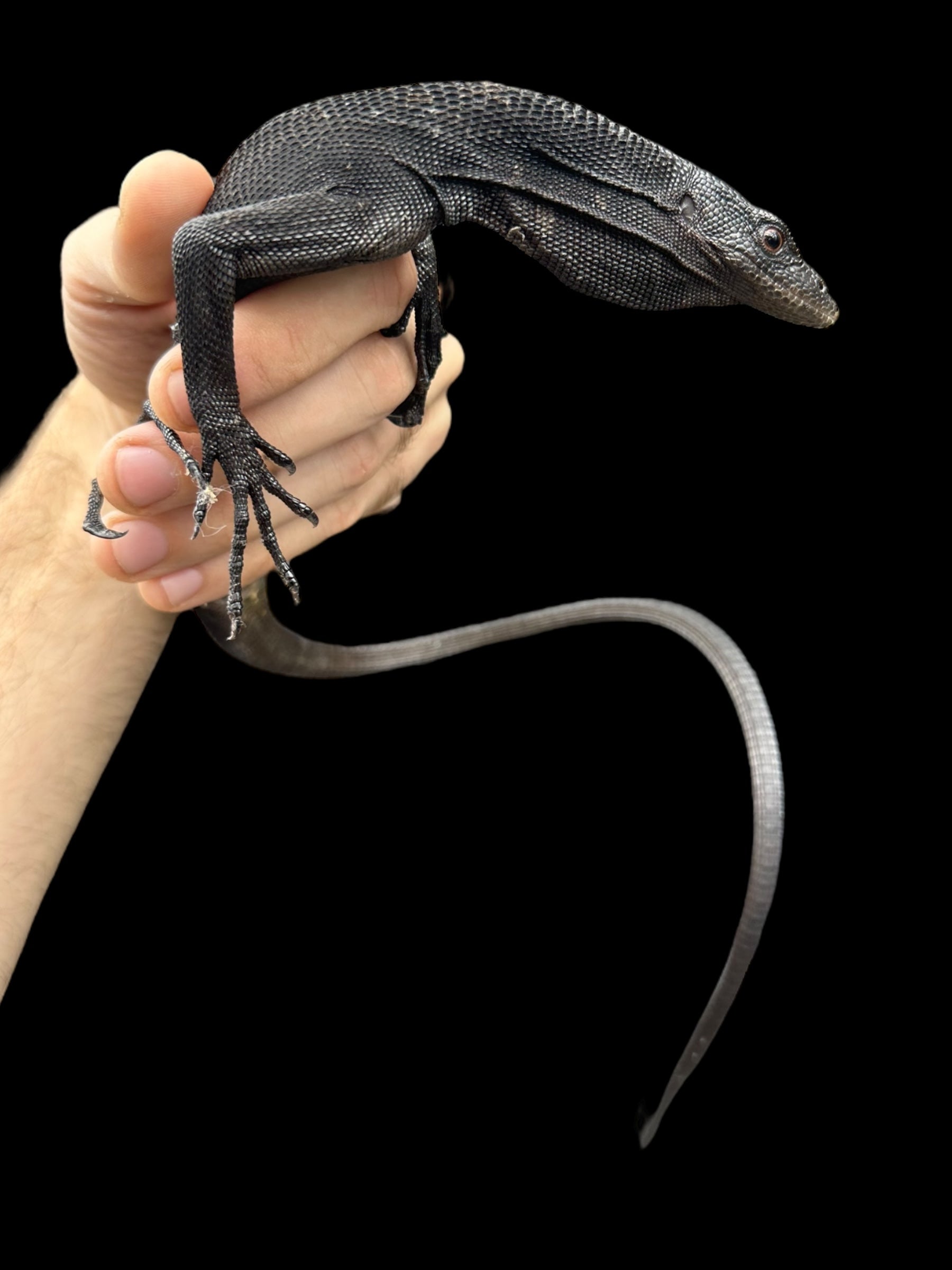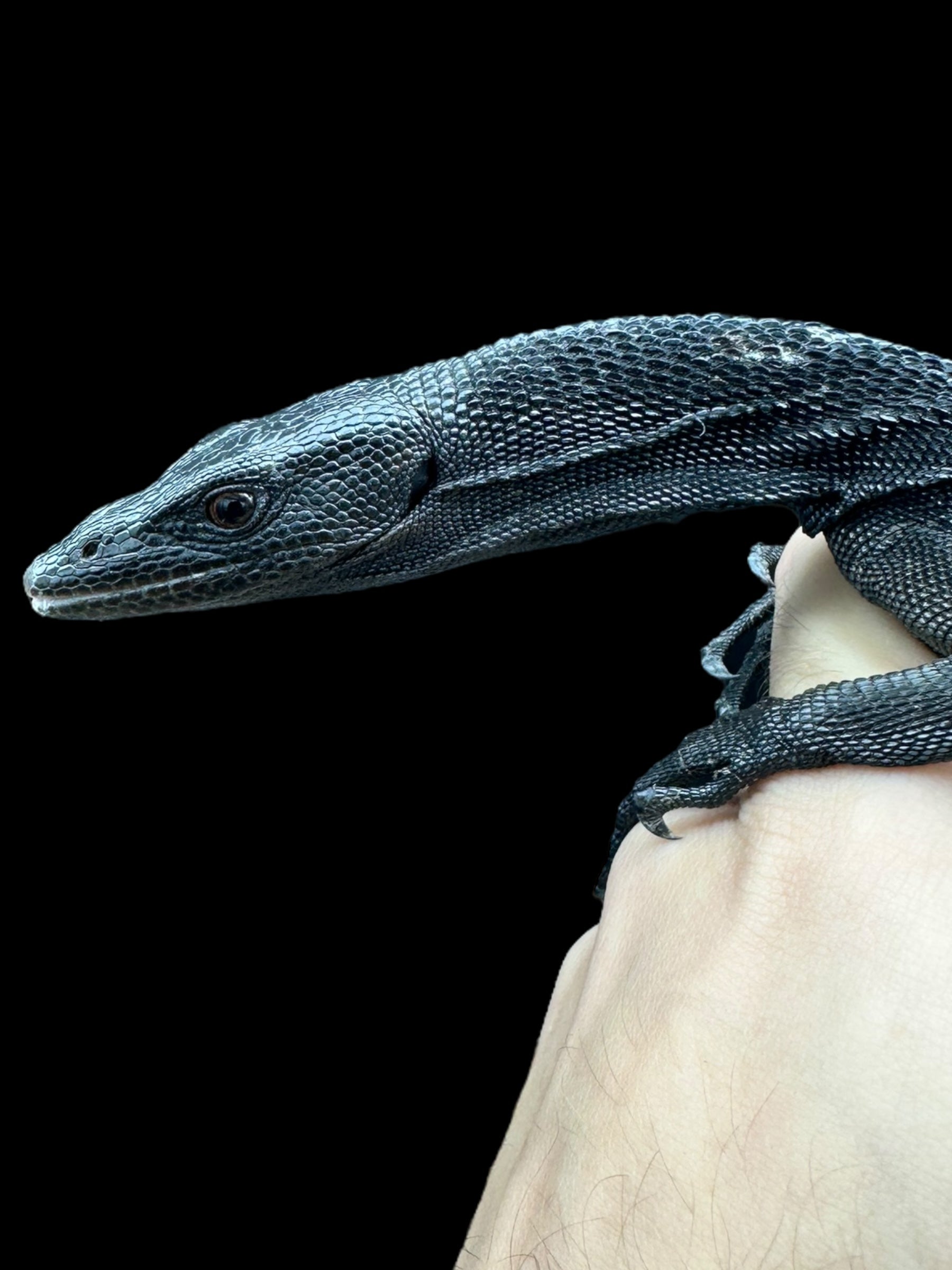Photo Disclaimer
Description
The black tree monitor, also known as Beccari's monitor (Varanus beccarii), is a relatively small member of the Varanidae family, growing to about 90–120 cm (36–48 inches) in total length. This species is endemic to the Aru Islands off New Guinea and is distinguished by its completely black adult coloration. Initially described as Monitor beccarii by Doria in 1874, it was later classified as a subspecies of the emerald tree monitor but was reinstated to species status in 1991 based on its unique black coloration and keeled scales on the neck. The name Varanus comes from the Arabic word "waral," meaning "monitor," and beccarii honors the Italian explorer Odoardo Beccari.
Hatchlings and juveniles of V. beccarii are dark grey with bright yellow-green dots, which they lose as they mature into their completely black adult form. These lizards are highly arboreal, with long prehensile tails that stabilize them in the branches, elongated digits with large claws, and adhesive soles for gripping trees. They are primarily insectivorous but also consume smaller lizards, small mammals, scorpions, eggs, and bird nestlings. Known for their intelligence and problem-solving abilities, black tree monitors can extract prey from tight crevices using their forelimbs. In the wild, they are nervous and will flee if threatened; if handled carelessly, they may bite, scratch, and defecate.
In captivity, black tree monitors require an enclosure that replicates their natural arboreal habitat, with plenty of vertical space, climbing structures, and hiding spots. They thrive on a diet of live insects, supplemented with small mammals, eggs, and occasionally other small prey items. Breeding in captivity has been challenging, with issues such as embryo death before hatching, possibly due to incorrect humidity levels or nutritional deficits in the mother. Courtship involves the male aggressively chasing the female, and copulation can last up to two hours. Ensuring the right conditions for egg incubation, such as using moistened vermiculite with controlled humidity and temperature, is crucial for successful hatching. Despite these challenges, with proper care and attention, black tree monitors can be a fascinating addition to a reptile enthusiast’s collection.


